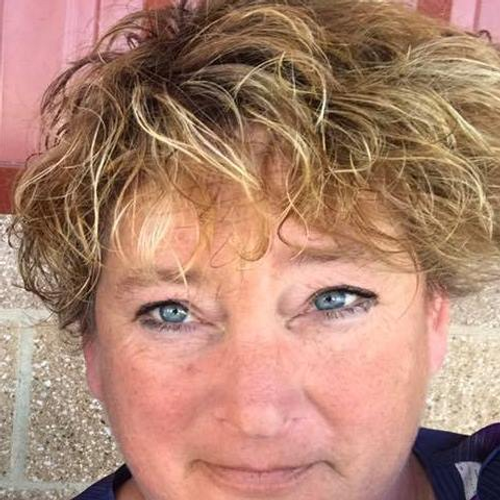Flying Your Dog with Helicopter Pilot and Vet Tech - Sandy McArthur
Flying a dog is, for many of us, a stress-inducing, anxiety-laden nightmare during which nearly all of us practice some form of begging the Air Travel Gods to spare our beloved pet from harm.
Sandy McArthur is a breeder, owner, handler of Basenjis. She admits to being terrified, for years, to fly her dogs, despite her professional background as a veterinary technician and helicopter pilot.
Her breed’s national at Purina Farms this year proved to be the tipping point at which she decided to “bite the bullet” and try flying her dog.
McArthur researched the topic thoroughly, including asking questions of friends in the industry and came away with some valuable tips, suggestions and reminders, which she offered to share with our listeners.
Statistics on Flying Your Dog
First, the stats. Statistically, just like people, dogs are far safer flying than driving. With more than 50,000 animals transported by air on an annual basis, the average number of incident reports indicate that .06 percent of those animals are injured.
Your Nerves or the Dogs?
The far more common concern among owners is that the dog will be nervous during the flight. McArthur said she considered sending her dog by car with a friend, but concluded that the dog was better of being worried for four hours than for a week driving cross country with a stranger.
“I was worried about it more than she was,” McArthur admitted. “One of my vets, when I discussed anti-anxiety meds, asked if they were for me or the dog.”
Tips from Sandy McArthur
Second, some recommendations.
- Know your dog. “Will it handle stress, things like noise and altitude change,” she said
- No drugs, no tranquilizers. “The dog can’t stabilize its body, possibly making it more panicky,” she noted. “And, those drugs are not tested at altitude… Even the AVMA says no tranquilizers. Rescue Remedy or another natural calming aid would be acceptable.”
- Fly Direct. No plane change means a significantly reduced chance of the dog winding up in a different location than you do.
- Look at the airport layout in advance to know where the potty areas are. Many airports now feature these consumer friendly options.
- Know the difference between flying the dog as “excess baggage,” in other words with you on the same ticket and “cargo,” as an independent action. The primary difference is you take it to ticket counter vs a cargo facility in a separate location — “The flight is the same for the dog,” she added.
- Call the airline directly to book yours and the dog’s flight. Dog room, even for dogs under 20 pounds flying in the cabin, is finite. “Don’t be booking your flight on Expedia,” she laughed.
- Size matters. FAA regulations state that the carriers must “execute safe handling of dogs.” The actual federal mandate, set by an independent organization, is the dog must be able to “comfortably stand up and turn around” in its crate. Each carrier uses these guidelines to set up their own procedures and regulations. “I brought two crates,” McArthur said. “I brought the one I wanted her to fly in and I brought the next size up just in case …. You can get an individual airline employee who insists on a bigger crate.”
- You need a health certificate for the dog. Most airlines dictate that the certificate is only good for 10 days. “Be sure to include enough time for your return trip and any potential delays,” McArthur suggested. She added that bringing a rabies certificate, in addition to the health certificate, is always a good idea, although not generally required.
- You may well need a letter of acclimation. The federal guideline is that dogs may only be flown in the cargo hold when the temperature is between 45 and 80 degrees. Anything above or below, the airlines won’t fly without a letter of acclimation.
- Get the dog used to the travel crate if this is a new concept for her.
- Use familiar bedding, but nothing special in case of accident. Disposable bedding plus extra for trip home is a good precaution.
- You can wait at the gate and watch out a window to see your dog loaded on the plane.
With a little careful planning and awareness, flying your dog safely and easily is something most owners can achieve.
Download Sample Acclimation Letter
Sample Acclimation Letter
Successful Flight to Basenji National
“When we got to St. Louis, she was more happy to see me than usual and I was worried she’d been stressed,”
McArthur said. “On the trip back when we arrived, she acted like she’d been flying all of her life.”
Flying "Fake" Service Dogs
As an aside to McArthur’s information, it is important to note that flying “fake service dogs” is highly frowned on by the American Kennel Club and the various handler’s organizations.
“Service dogs are defined as those that are individually trained to do work or perform tasks for people with disabilities. The AKC strongly supports public accommodations that allow individuals with disabilities to use service dogs.
“The AKC strongly condemns characterizing dogs as service animals when they are not, or attempting to benefit from” a dog’s service dog status when the individual using the dog is not a person with a disability.
AKC and PHA Handlers Code of Ethics On Flying Service Dogs
The
AKC Registered Handlers Program Code of Ethics includes the following statement in which the signer agrees to, “Never falsely represent a dog as a service animal when it is not, or as an able-bodied party, accompany a bona fide service dog to gain travel benefit due to the dog's status.”
Professional Handlers Association Code of Ethics
The
PHA Code of Ethics states, “A member will not misrepresent a dog as a service animal when it is not in order to gain access to the travel benefits of a legitimate service animal.”
Biography of Sandy McArthur
As a first generation dog person, Sandy comes originally from a background of showing/training hunter-jumpers, later 3 Day Event and still training dressage on and off. She adopted her first rescue Basenji in 1992 who has some severe behavioral issues.
Having various “farm dogs” growing up, she quickly became “hooked” on this quirky barkless breed and then joined a local breed club and obtained her first show dog from Terry and Jackie Jones of Dragnquest Basenjis. She is also an AKC Lure Coursing Judge.
In her professional life Sandy is a Certified Veterinary Technician having served as Head Technician and Hospital Manager for multiple facilities over the course of 25 years. She is also a Commercial Helicopter Pilot and Flight Instructor and flies with a local operator.
Sandy McArthur and Basenji



